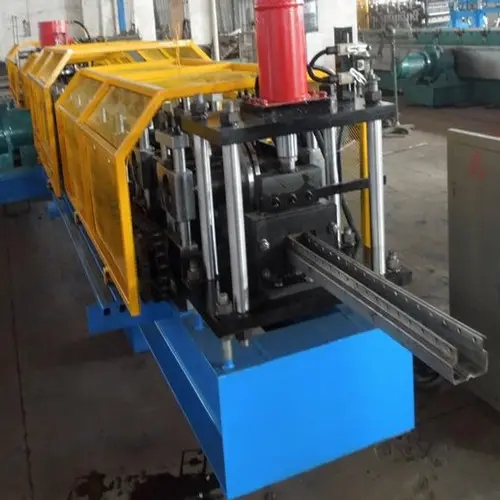
Understanding Strut Channel Roll Forming
In the realm of structural engineering and construction, strut channels play a pivotal role in providing support and stability to various structures. Strut channels, sometimes referred to as C-channels or U-channels, are utilized in a variety of applications, ranging from HVAC systems to mounting racks for industrial components. The process of creating strut channels is often executed through a technique known as roll forming, which offers numerous benefits over traditional methods of manufacturing.
What is Roll Forming?
Roll forming is a continuous bending process in which a long strip of metal, such as steel or aluminum, is gradually formed into the desired shape by passing it through a series of rollers. These rollers are specifically designed to create different profiles as the metal strip moves through them. The roll forming process is notable for its efficiency, repeatability, and ability to produce high volumes of consistently shaped products.
The Roll Forming Process
The roll forming process begins with a flat sheet or strip of metal, which is fed into the first set of rollers. As the metal strip progresses through these rollers, each subsequent set gradually alters its shape until the final strut channel profile is achieved. This process is highly adaptable, allowing for custom widths and depths to accommodate specific project requirements.
Typically, roll forming machines consist of multiple stages, each designed to perform a specific function. Some stages may include feeding, pre-cutting, roll forming, and post-processing like cutting and bending. The precision of this process ensures that strut channels maintain tight tolerances, which is crucial for structural integrity.
Advantages of Strut Channel Roll Forming
1. Cost-Effectiveness Roll forming is often more cost-effective than other manufacturing methods such as extrusion or stamping. The ability to produce long lengths of material means that there is less waste, and the setup costs for machinery can be spread over larger production runs.
2. Material Efficiency Roll forming can utilize thinner gauge materials while still producing strong and functional strut channels. This allows for significant savings on raw materials without compromising structural performance.
3. High Quality and Consistency The consistent conditions inherent in the roll forming process lead to uniformity in the final products. This high level of quality control is beneficial for projects where exact specifications are critical.

4. Customization Options Different profiles, widths, and depths can be easily accommodated in the roll forming setup. This versatility makes it possible to tailor strut channels for specific applications or to meet unique client specifications.
Applications of Strut Channels
The applications for strut channels produced through roll forming are vast. They are commonly used in the following sectors
- Construction Strut channels serve as support structures in buildings, providing a framework for various systems such as electrical, plumbing, and HVAC installations.
- Manufacturing In industrial settings, strut channels are often utilized for mounting equipment, securing heavy machinery, and creating adjustable frames.
- Telecommunications Strut channels are essential in supporting racks for telecommunications equipment, allowing for easy access and flexible configurations.
- Automotive The automotive industry uses strut channels in various capacities to support and protect components within vehicles.
Conclusion
Strut channel roll forming presents a reliable and efficient solution for producing structural supports that meet the demands of modern engineering and construction. The advantages of this method, including cost-effectiveness, material efficiency, and high quality, make it a preferred choice for many industries. As technology advances, the roll forming process continues to evolve, promising even greater capabilities and efficiencies in the production of strut channels and other structural components. Whether in a towering skyscraper or a simple mounting bracket, strut channels stand as a testament to the ingenuity of modern engineering.